
The Caregivers Guide to In-Home Safety
79 TIPS FOR SENIOR SAFETY
The complete guide to safety-proofing your care recipient's home. In this guide, we cover every room and key details to look for when creating a safer home.
Author:START READING
Related ARticles
- The Ultimate Guide to Caregiver Burnout
- 23 Tips for New Caregivers
- Self-Care for Caregivers
- The Caregiver's Guide to In-Home Safety
Introduction
When it comes to home care for elderly persons in their own homes, safety needs to be a significant priority. This means adjusting how you think when it comes to how items in the house are laid out, installing safety devices for elderly persons, and applying basic home safety tips. Home safety for seniors is a significant priority for your caree to maintain some level of independence, especially if you are not there for substantial amounts of time.
To understand why in-home safety is critical when being a caregiver is to know the facts about senior falls. As we get older, we become less agile and able to take the impact that falls have on our bodies.
Here are six facts from the U.S. Centers for Disease Control and Prevention that explain why senior safety alone is paramount:

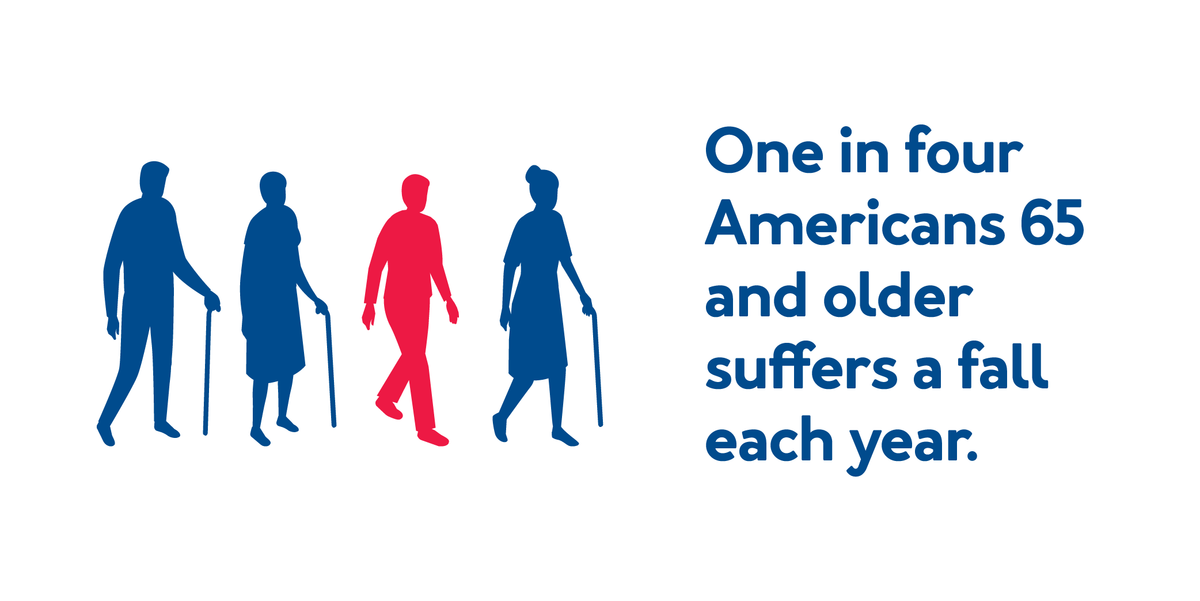

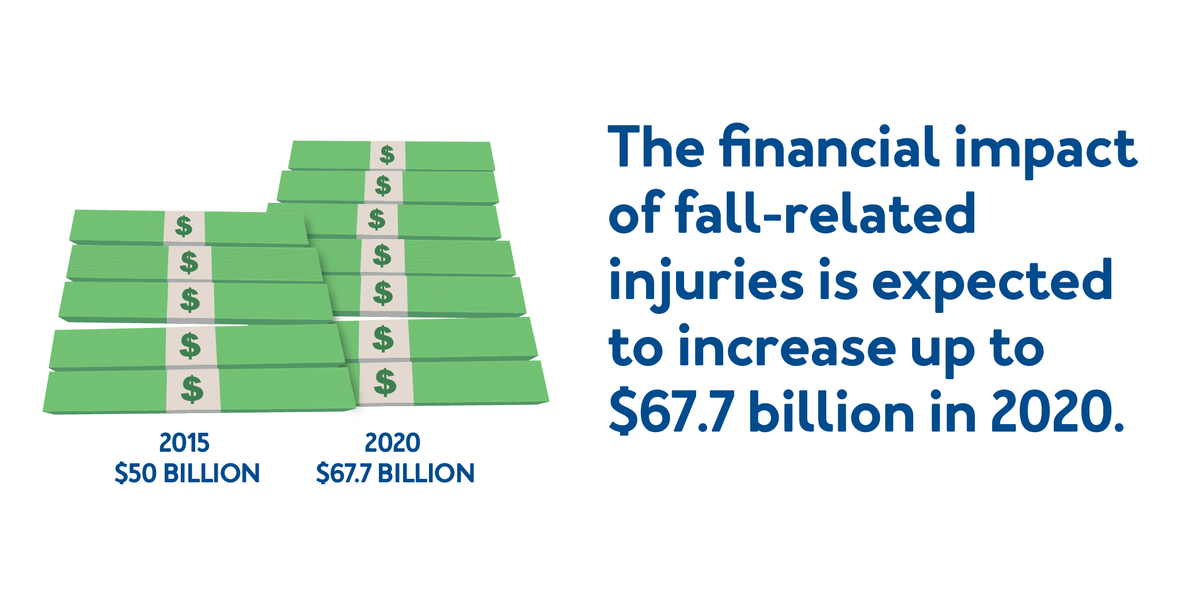

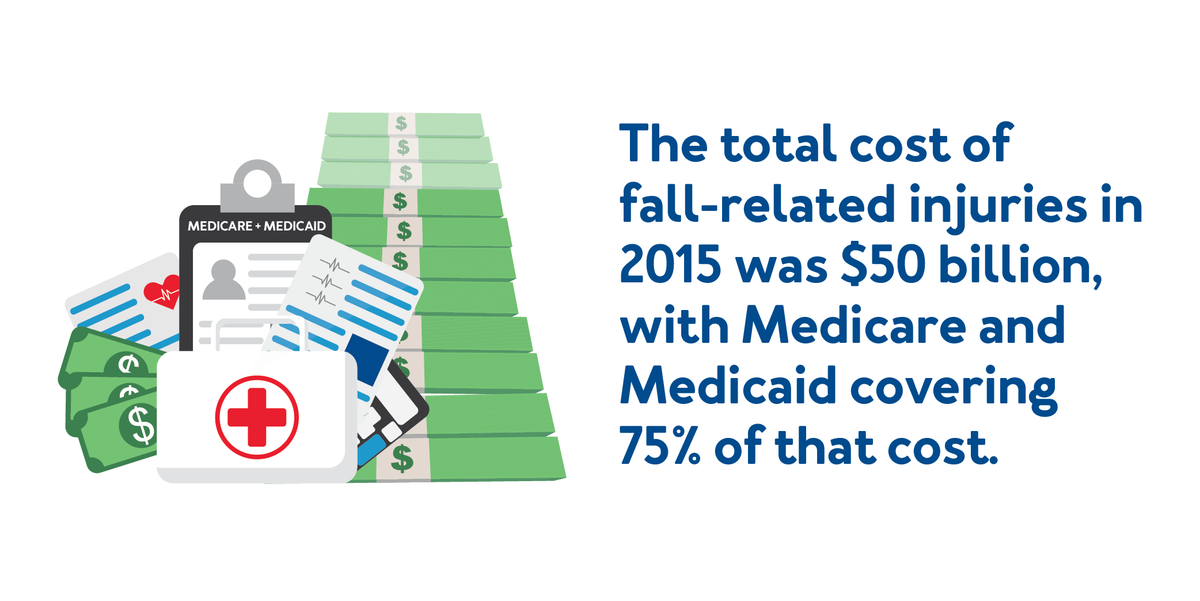
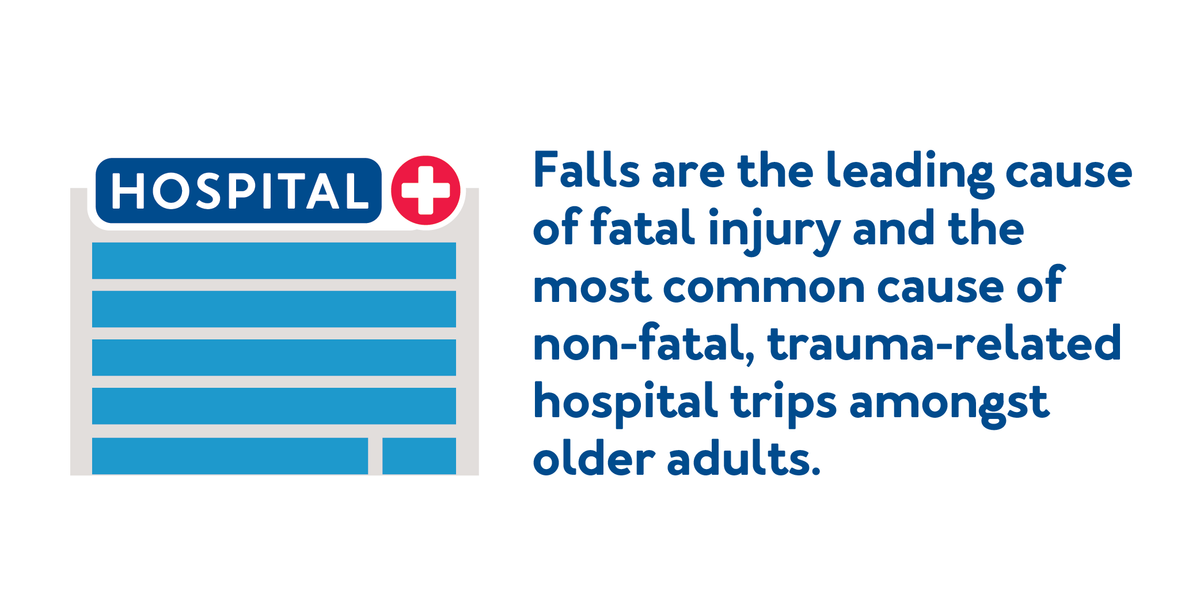
When seniors fall, it can be more costly compared to younger people. It's essential to take preventative steps to help reduce the risk of your caree falling and injuring themselves. We've compiled these in-home safety tips and appropriate senior safety devices to help you go through your caree's home and ensure they aren't at high risk of injury. Use this as a home safety checklist for seniors when walking through the house.
General Safety Tips
These general safety tips provide guidance when you're walking through the house. They can be applied to virtually any room in the house and include preventative actions to take as well as tools to help elderly persons maintain safety at home.
1. Remove any visible fall hazards:
- Loose Rugs
- Clutter such as free paper, clothes, and shoes
2. Create an open environment: Remove any tight spaces that may cause straing on your caree's movements (primarily if they use a mobility aid)
4. Make sure your caree wears non-slip footwear such as padded slippers when in the house.
5. Ensure that all rooms have adequate lighting. Do so at night when the house is the darkest. Add extra lighting and night lights throughout the home to prevent falls and improve visibility.
6. Install rocker light switches if your caree struggles with traditional switches. These are easier to press.
7. Remove any chairs with rolling wheels. They can increase the chances of senior falls.
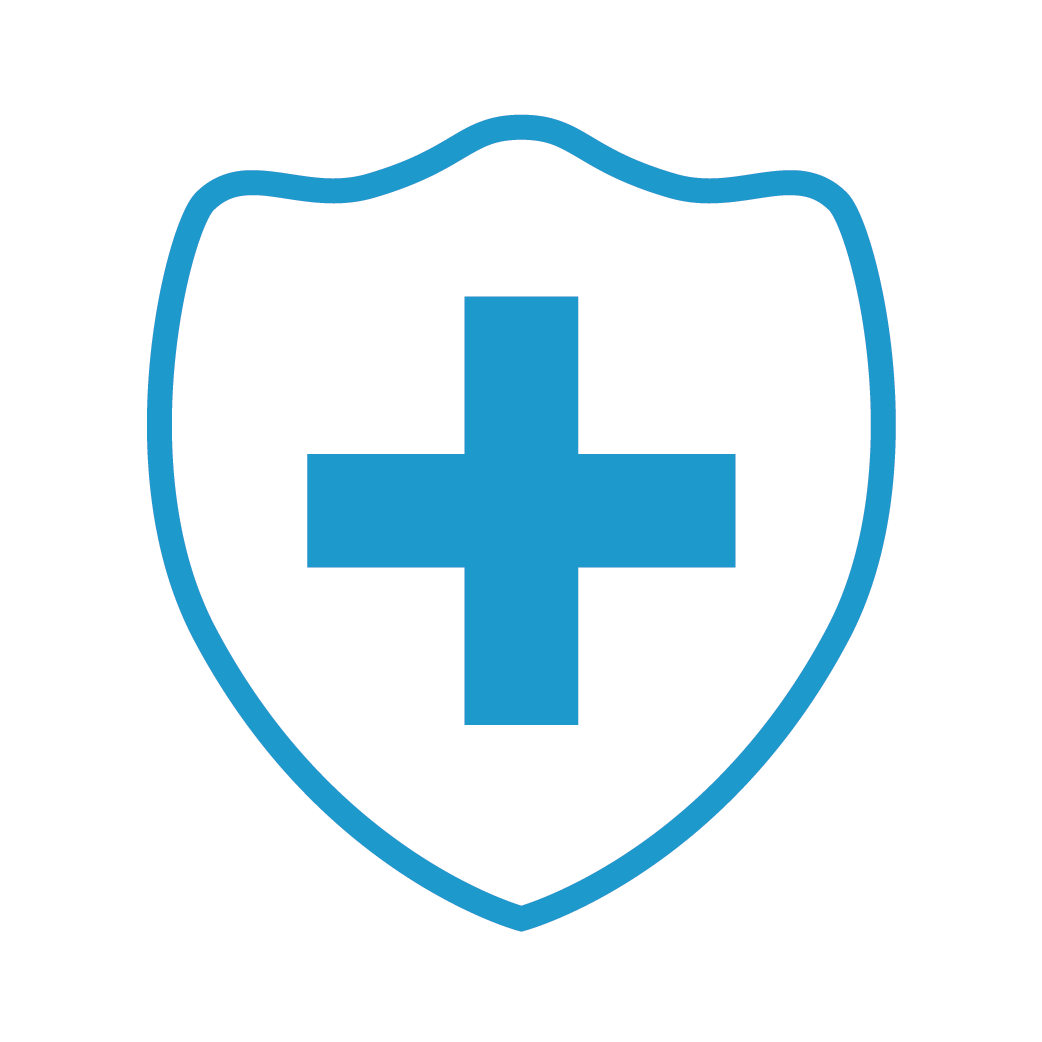
Emergency Preparedness
Seniors at home are more prone to not being able to respond to any emergencies at home adequately. Having plans and tools in place in the event to improve elderly safety can significantly reduce the potential severity of any situation.
8. Have emergency numbers handy in an easily accessible cell phone.
9. Have a way for your caree to contact 911 without having to get up. Try options like life alert or installing a smart speaker that's enabled to dial 911.
10. Prepare a home first aid kit with medical essentials including bandaids, anti-bacterial wipes, eye patches, pain reliever, and any health condition-specific needs (such as epi-pens for allergies).
11. Have a flashlight easily accessible in-case of power outages (don't forget the batteries!). Have multiple flashlights in the most commonly used areas of the home.
12. Have notes taped to the front door alerting any emergency responders of any health conditions with important contacts listed. Include large labels on them so any stranger would know what they are.
13. Have your caree wear medical jewelry specific to their condition. 14
14. Make sure surrounding neighbors and friends/family are aware of your caree's condition, and if they live alone. Have someone local on standby, if possible.
15. Buy a wearable alert device that will notify you if your caree has fallen or is having health complications.
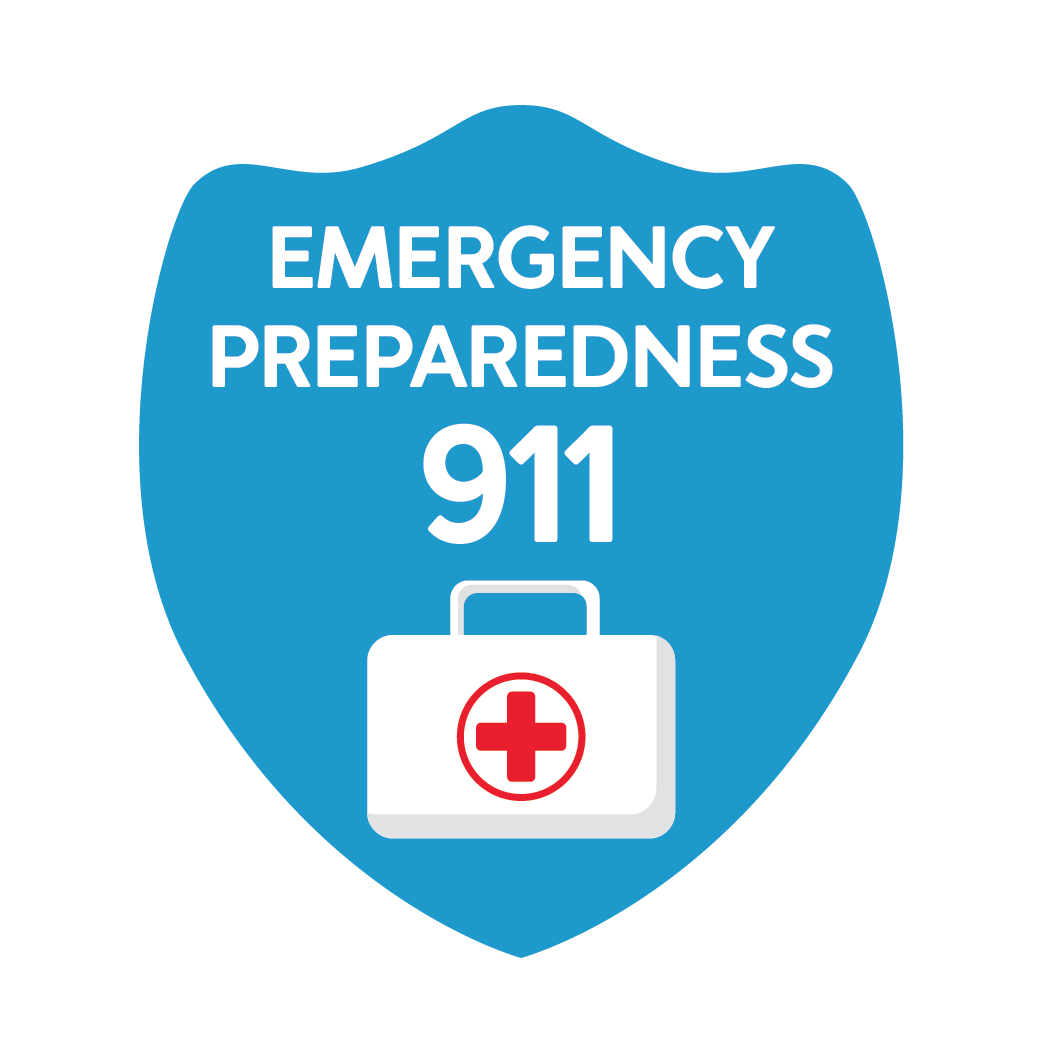
Fire Safety
A significant factor to consider when improving in-home senior safety is your caree's ability to move quickly. In the event of a fire, they may not be able to maneuver as fast as others out of the house. To combat this, have the proper tools, resources, and contacts in place to ensure they're able to react promptly.
16. Make sure there is an adequate number of fire detectors in the home, and they all work.
17. Check all electrical cords for any damage or fraying. Replace if necessary.
18. Make sure all appliances are in proper working condition, throw out any that aren't.
19. Make sure all outlets are not overcrowded, use extension cords where needed.
20. Remove any candles if necessary. Keep candles at a safe distance from flammable items.
21. Have an evacuation plan and go over it with your caree.
22. Discourage space heaters and make sure they are not near any objects prone to catching fire (curtains, bedding, furniture, etc.).
23. Check to see if furnaces and air conditioners are properly maintained. Have a professional check them if needed.
24. Install a carbon monoxide detector.

Home Security
Home security is a must-have to improve the home safety of elderly persons. Your caree is not as able when it comes to self-defense. It's always a best practice to take the steps and invest in home security and specialized products for the elderly living alone.
25. Install camera systems such as Ring so you can keep an eye on things.
26. Install a peephole, so your caree can see who's at the door.
27. Install a security system and teach your caree to set it before leaving home.
28. Install a mail slot to prevent mail theft.
29. Make sure all windows and doors are able to close and are locked.
30. Check with your caree to see who has keys to the house. Consider changing locks if needed.
31. Ensure all keys work and with which entry point. Have them placed on a key holder near the front door.
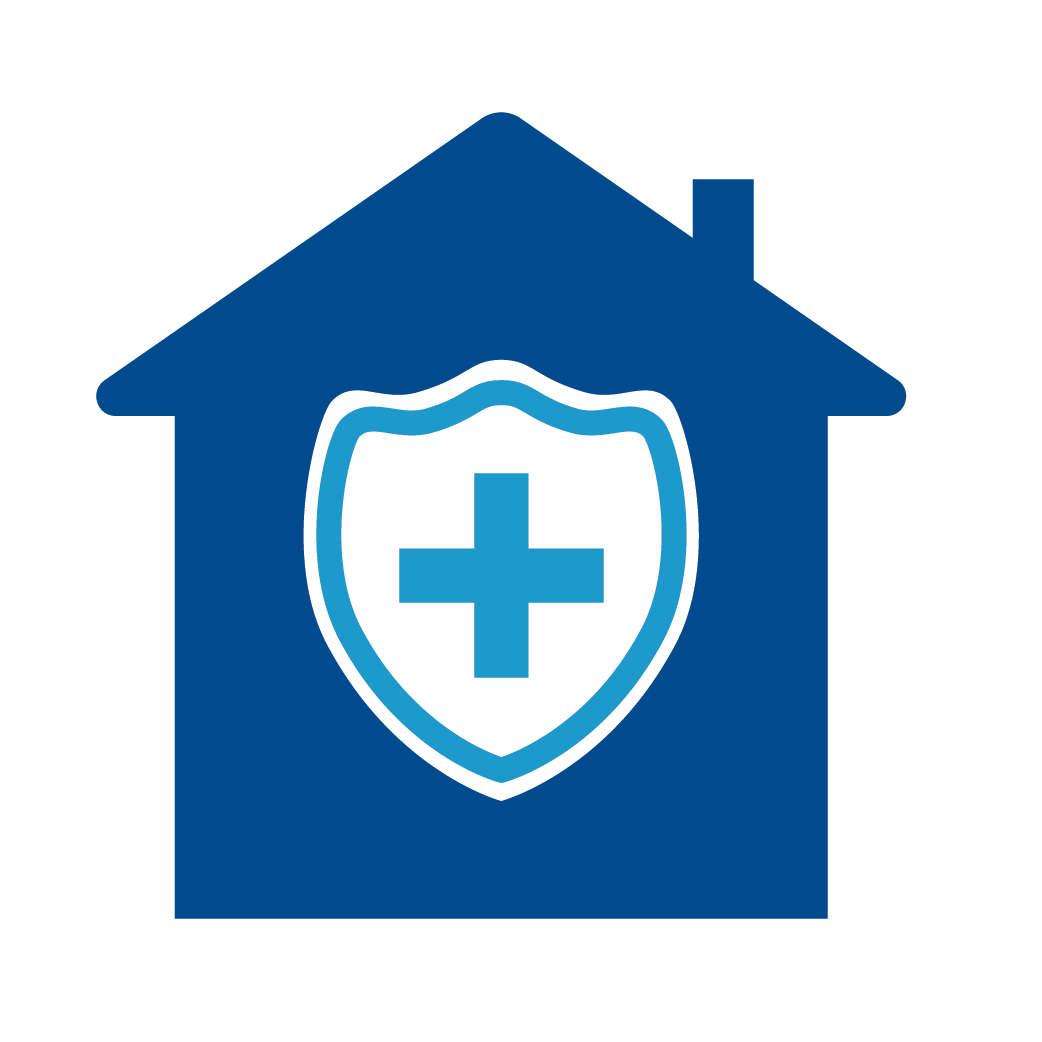
Bathrooms
If you were to prioritize in-home senior safety based on the household room, bathroom safety would be number one. The bathroom is where most falls occur, making bathroom safety for seniors ultra important. These steps, like most of the ones in this guide, are relatively easy to implement. And luckily, there are many affordable home care products for elderly persons that provide support and fall prevention.
32. Make sure your caree can get in and out of the shower/tub without a struggle. If they can't, work with your caree to have the proper tools installed. Helpful bath safety aids include:
- Grab bars
- Bath mats
- Safety rails
- Shower/bathtub seats
- And handheld shower sprays
33. Keep bathroom counter toiletries in one place, so your caree does not need to search hard to find their needed item.
34. Ensure any medicine kept in the bathroom is appropriately labeled and easily accessible. Consider using a pill organizer.
35. Keep stocked toilet paper near the toilet within arms reach.
36. Make sure your caree can use the toilet without a struggle. If not, work with them to find what bathroom safety items would help. This includes bath safety products such as:
- Raised toilet seats
- Toilet safety rails
- And commodes
37. Make sure the water temperature is limited to prevent accidental hot water burns.
38. Keep all shower toiletries in one place (both in the shower and around the sink).
39. Ensure any medicine kept in the bathroom is appropriately labeled and easily accessible. Consider using a pill organizer.
39. Have towels easily accessible near the shower/bathtub.
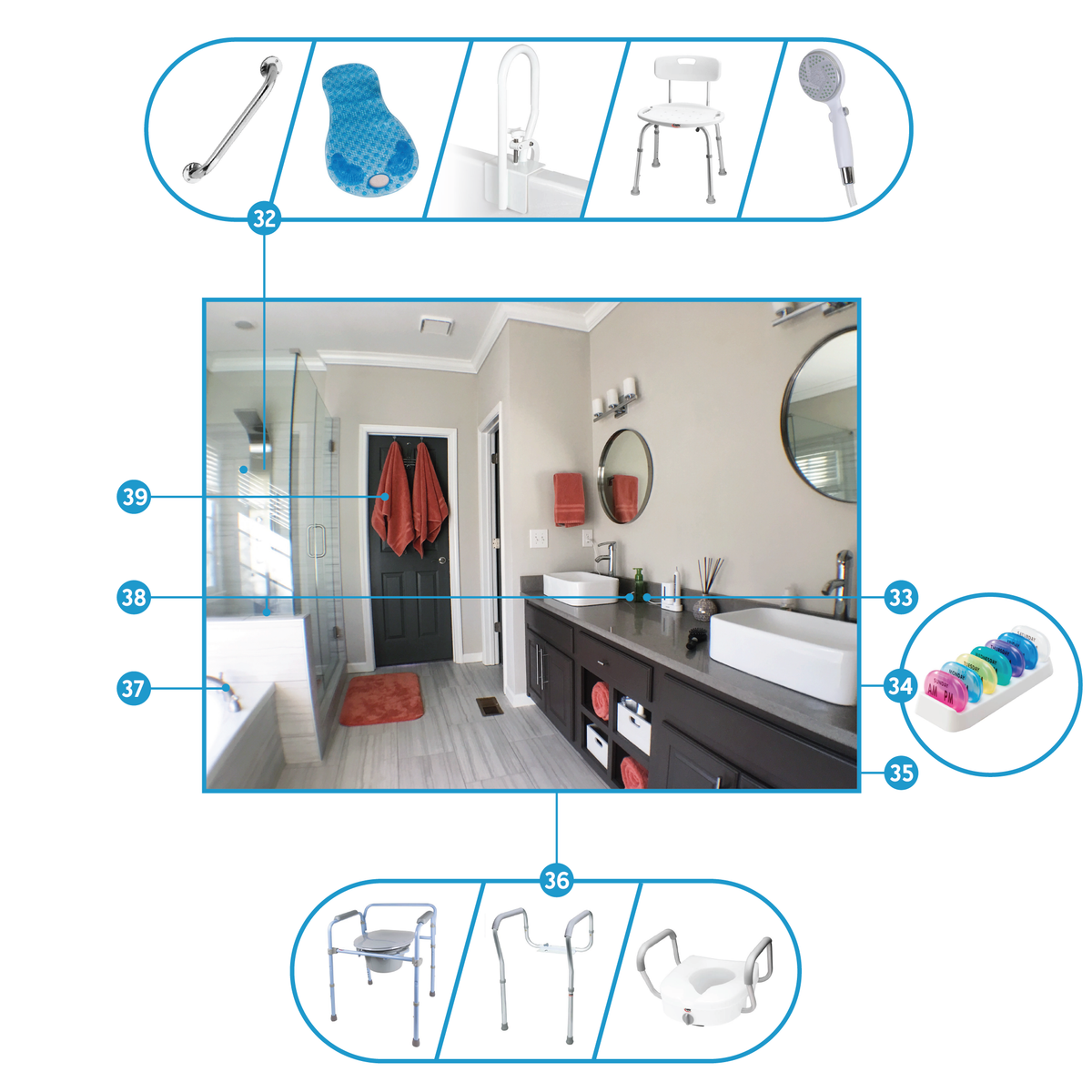
The Kitchen
When it comes to keeping the elderly in their own homes or caring for elderly parents at home, they need the right tools to maintain their independence. When they're in the kitchen, moving around a lot becomes luxury with age. Your caree needs to eat, and maneuvering around the kitchen can prove to be an obstacle. Keep this in mind when looking at the kitchen and think of movements that require reaching, grabbing, pulling, pushing, and using general strength.
40. Install a faucet with a single-lever handle that's easy for your caree to turn on and off.
41. Check with your caree that they can easily reach all items in cupboards. If not, consider keeping things in lower cabinets, installing drawer organizers, wall racks, or pull-out shelving.
42. Make sure all kitchen appliances are appropriately labeled and can be easily read.
43. Install auto-off ovens and stoves to prevent fires.
44. Place labels on cabinets with what is inside them.
45. Check with your caree that they can perform simple tasks such as opening/closing containers and using eating utensils. If they do struggle, consider tools such as:
- Jar opener and closers
- Utensil holders
- And other daily living aids
46. Add a kitchen stool for your caree to sit on if they can't stand for long periods.
47. Keep heavier items located in more comfortable to reach places.
48. Ask your caree's doctor about any food allergies and have them listed on the fridge.
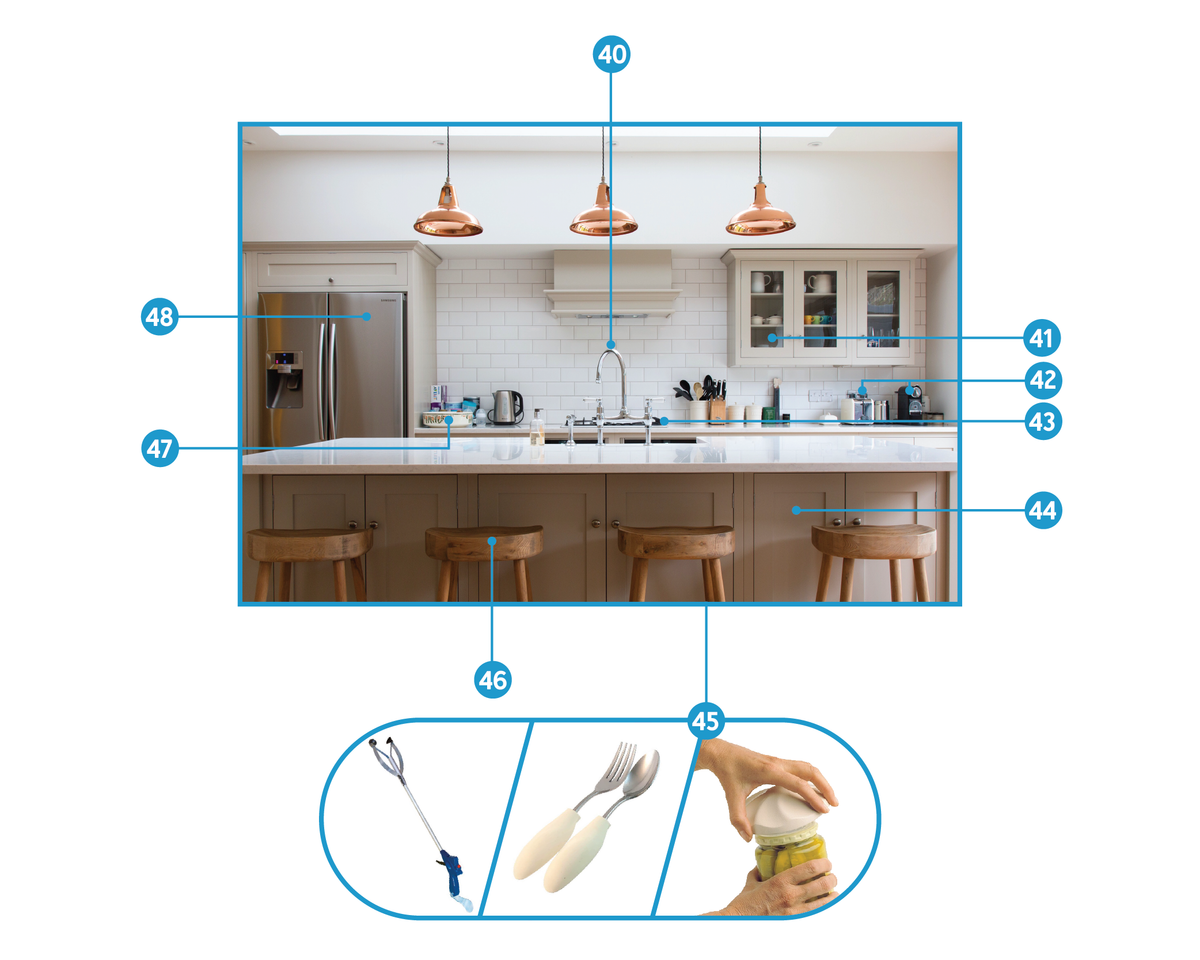
Stairs
Stairs prove to be the least forgiving should your caree fall down them. This area of the house requires the most consideration when it comes to installing elderly fall prevention devices and tools. Seniors are considered to be high fall risks, and stairs only increase their chance of falling.
49. Check with your caree if they struggle to get upstairs and downstairs.
50. Install handrails going up the stairs for support.
51. If needed, consider installing a stairlift.
52. Have sturdy furniture near the top and bottom of stairs, so your caree has something to support them.
53. Add non-slip flooring or textured strips on the edges of the stairs.
54. Check and light switches near the top and bottom of the stairs, so one never has to go up/down in the dark.
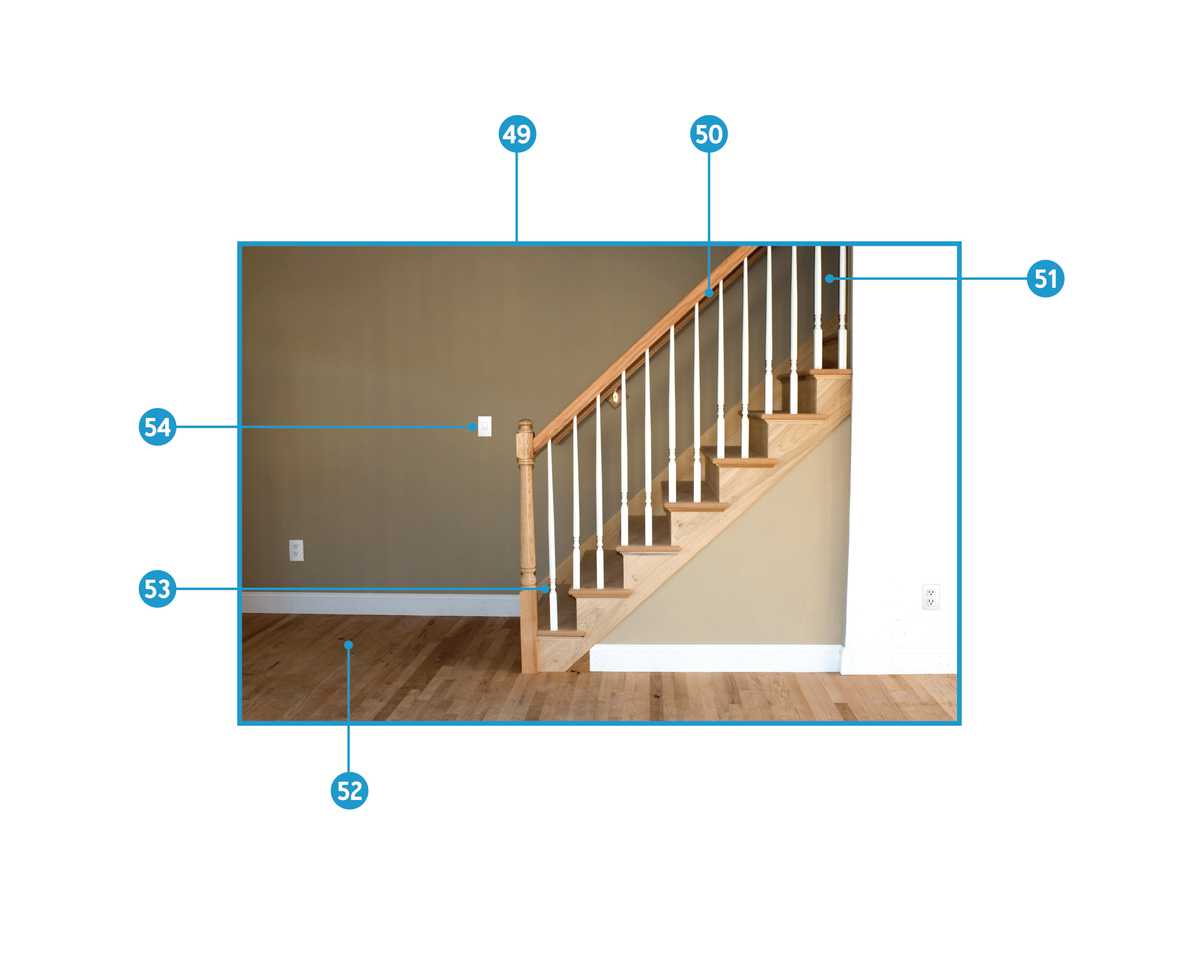
The Bedroom
Depending on your caree's condition, the bedroom may require a more considerable amount of safety precautions (second to the bathroom). If they have mobility issues, getting in and out of bed can be difficult, and dressing may need extra attention. Take the time to consider your caree's personal care needs and routines. It will help them stay independent and help keep their mental wellbeing in good standing.
55. If your caree has problems with accessibility, try the following home care devices:
- Safety bed rails for elderly persons can help your caree get in and out of bed while also preventing falls.
- Reacher grabbers help seniors reach hard-to-get items.
- Shoe horns make putting on shoes very easy if your caree has trouble using their hands.
- Overbed tables offer a firm support surface for activities such as breakfast in bed, reading, and more.
56. Check with your caree to see if they can easily access their clothes. If not, consider removing their dresser or hangers for something more manageable.
57. Clear the room of clutter, so there are clear walking pathways with low risk of falls.
58. If your caree has significant mobility issues, consider having a bed-side commode to prevent late-night accidents.
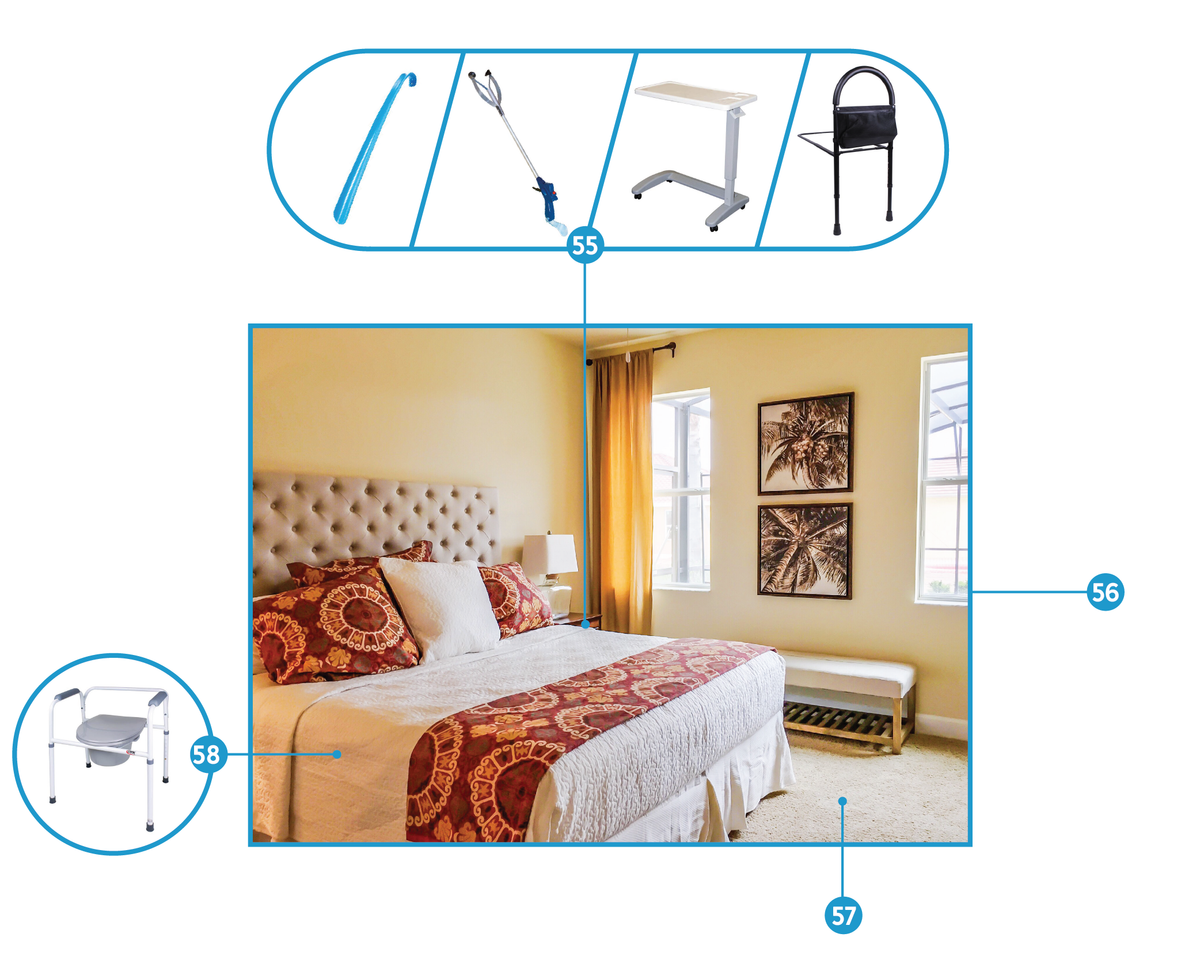
The Living Room
Living rooms are most likely the most used room in the house. It's where your caree's friends and family go to gather. Naturally, this makes it critical to keep the living room from being overly cluttered and crowded with items to keep fall risks low.
59. Make sure the TV is secure and not at risk of falling. Consider hanging the TV on the wall to add more space and safety.
60. Add storage such as side tables, coffee tables, and other furniture to clear any clutter.
61. Keep supportive furniture to aid in standing and sitting.
62. Make sure to arrange furniture to prevent trips and falls.
63. Keep things like lamps away from vulnerable corners to prevent them from falling.
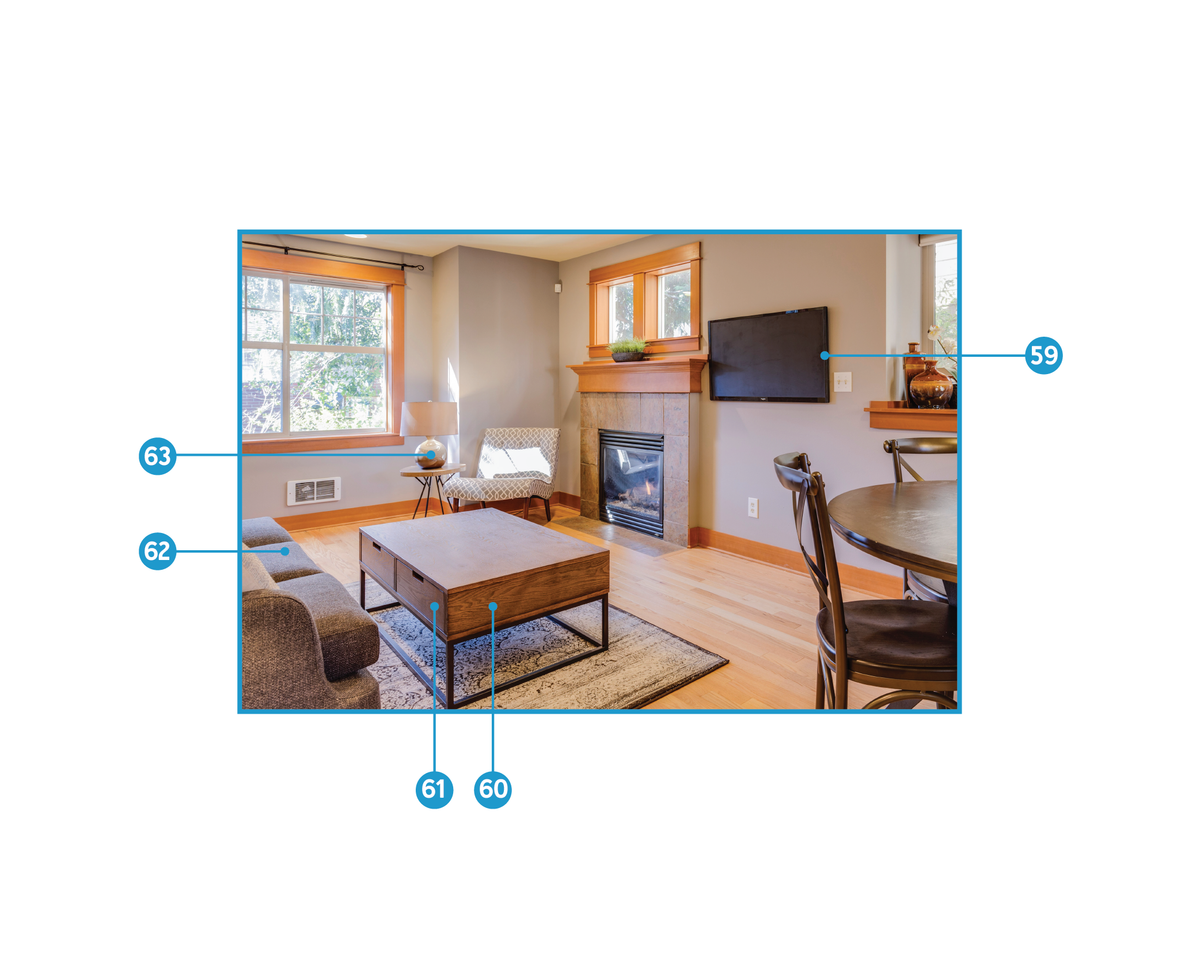
Hallways
Halls are the most narrow areas of the house, and your caree may have trouble moving as it is. A major key element for proper senior safety is making sure they're able to move throughout the house comfortably. Halls, by nature, can be a significant barrier. Try to keep space to move around at a maximum and have support systems in place when covering hallways.
64. Make sure your caree can use any mobility aids throughout all halls without bumping into any objects.
65. Line the floor with night lights to keep visibility at night.
66. Make sure light switches spread throughout halls and near doorways for convenient access.
67. Check any hanging pictures to make sure they won't easily fall if bumped.
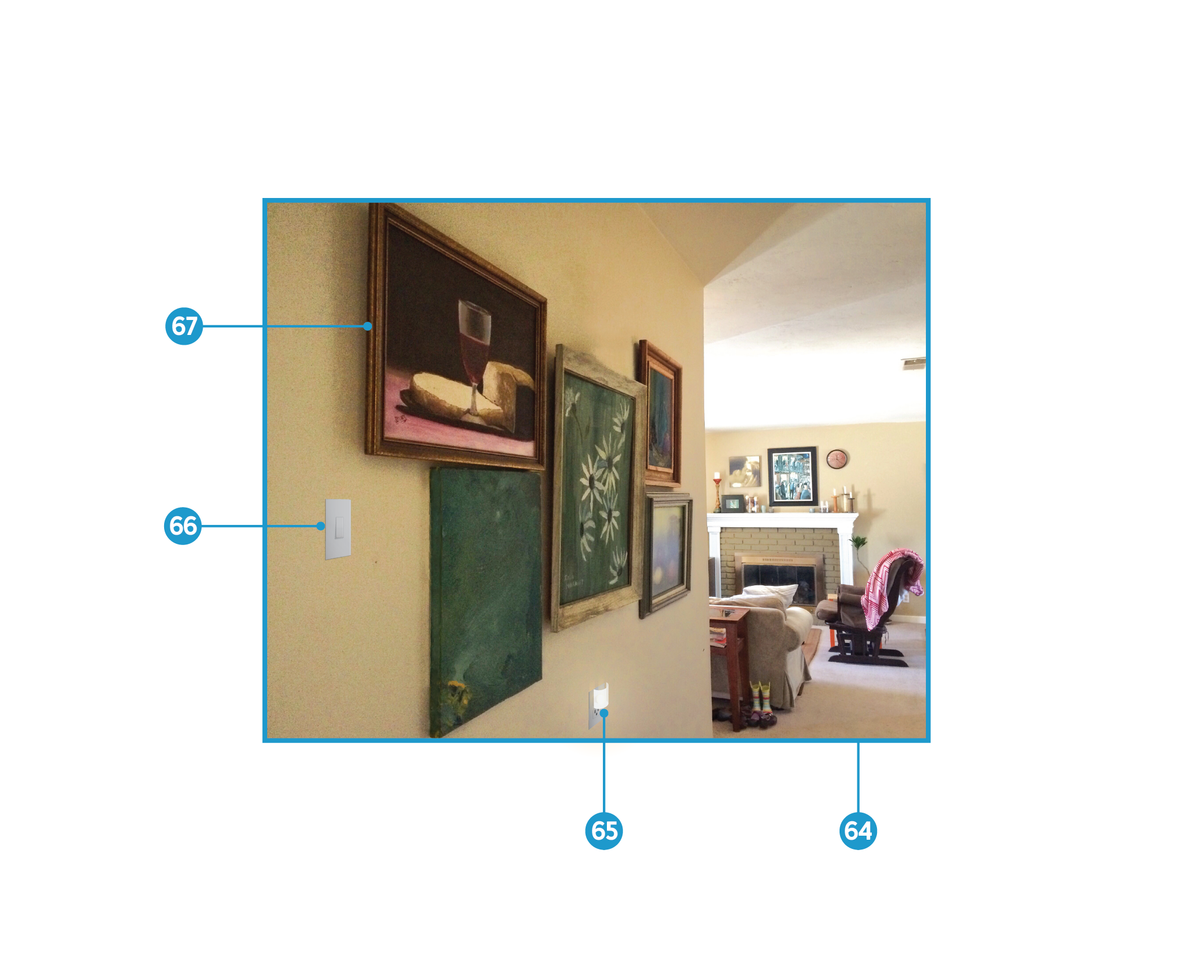
The Garage
Every home is different; however, the garage is most commonly where cleaning chemicals, tools, and heavy items are stored. The garage can prove to be a safety hazard for your caree without proper precautions. Keeping the garage clear of clutter and free from fire and electrical hazards are essential for senior safety.
68. Check to see if the garage door can easily be open from the outside.
69. Check for any loose wires, tools, or equipment that may be a trip hazard.
70. If there are stairs, make sure they are adequately lit to prevent falls.
71. Make sure that any flammable liquids are stored correctly in tight containers.

Outside and Around the House
The surrounding area outside your caree's house is the most unpredictable. Outside areas require you to take a closer look as well as continue to keep an eye on things. It's essential to take more notice if any bad weather such as storms and snow comes through your caree's area.
72. Keep an eye out for any exterior damage the home may have. Take any needed actions if this is the case.
73. Keep salt for ice stocked for when it snows.
74. Wait until it gets dark to see if the home is adequately lit. Consider installing motion-activated floodlighting.
75. Make sure any walkways are clutter and trip-free. Cut down any overgrown plants.
76. Check with your caree that they can comfortably get in and out of the house. Consider installing a wheelchair ramp if needed.
77. Check with your caree if they can keep up with yard maintenance.Replace/remove any plants that require a lot (if necessary).
78. Look for any overgrown trees that may be touching electrical wires. Hire a professional to cut them if needed.
79. If there are any bodies of water around the house (ponds, ditches, etc.), check to see if any trip hazards surround them.

As with most things involving caregiving, it's always best to be proactive and look out for anything that may cause problems. Going through the extra effort to secure your caree's safety can mean preventing potential future injuries and problems. Use this guide to walk through your caree's home and take notice of the areas of focus that we've highlighted in this guide.
Related Resources
About the Author

Brandon Landgraf is the Digital Marketing Manager for Carex Health Brands. He finds passion and fulfillment in creating content that enhances, improves, and enlivens others' quality of life. All of his written work is formulated to not only offer essential advice and tips but back it with proven studies and experts. His mission is to connect with readers and provide steps to make their lives better.
You can connect with him on LinkedIn here.
About Carex Health Brands
Carex is your one-stop shop for home medical equipment and for products that assist caregivers with providing the best possible support and care for their loved ones. Carex Health Brands has been the branded leader in in-home, self-care medical products for over 35 years. Our goal is to improve the lives of our customers by bring them quality products that bring dignity back to their lives. With our three nationally distributed brands, Carex Health Brands serves national, regional and independent food, drug and mass retailers along with wholesalers, distributors and medical dealers.





